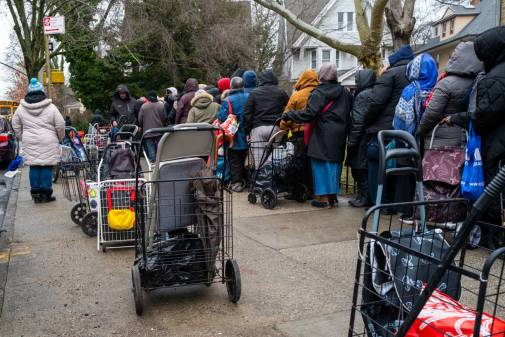National League of Cities: 10 critical imperatives facing cities
In a new report, the National League of Cities identifies “The 10 Critical Imperatives Facing America’s Cities” and proposed strategies to address these challenges.
In a new report, the National League of Cities identifies “The 10 Critical Imperatives Facing America’s Cities” and proposed strategies to address these challenges.
“When our cities are strong, our nation’s families prosper, our economy thrives and our environment grows healthier,” said NLC President Chris Coleman and mayor of St. Paul, Minn. “But we still face some monumental challenges that will require us to take decisive action now and work together to make cities strong, vibrant and sustainable.”
The report identifies these 10 critical imperatives facing cities and the NLC’s strategies:
Advertisement
- Fragile Fiscal Health: Cities report their fiscal health is improving, but they continue to confront the prolonged effects of the recession and remain vulnerable to federal spending cuts. Among the solutions: Cities require new tools in their revenue-generating toolboxes, such as laws allowing them to collect taxes already owed to them from remote online purchases.
- A Deteriorating Transportation Infrastructure: Traffic congestion continues to worsen, choking the air with pollution and costing commuters millions of dollars in wasted gas and thousands of hours of lost time every year. Among the solutions: Cities must have new ways to pay for roads and explore new modes of transportation such as water ferries, light rail, bus rapid transit and bicycle pathways.
- A Shrinking Middle Class: Over the past decade, middle-class families saw their median incomes decline by nearly 30 percent. Among the solutions: Cities should develop strategies to connect eligible residents with state and federal work support and public benefits, expand opportunities to save and build financial assets and help hard-to-employ resident overcome barriers to work.
- Inadequate Access to Higher Education: Higher education brings better-paying jobs, growing tax revenues, enhanced public safety and a better quality of life. Yet, only 40 percent of American adults currently hold postsecondary degrees, and this rate is significantly lower for underserved minorities. Among the solutions: Cities can partner with K-12 schools and other community stakeholders to ensure more students graduate and go on to obtain higher college degrees.
- The Need for Affordable Housing: Foreclosures and vacant houses have destabilized neighborhoods across the country, resulting in increased crime, blight, shrinking local tax bases and more demand for social services. Among the solutions: To stabilize neighborhoods, cities can help to provide mediation between lenders and borrowers, prevent vacant property deterioration and rehabilitate properties for resale or rental.
- A Less-Than-Welcoming Return for Veterans: Service members coming home from combat zones face a higher risk for unemployment, homelessness and family problems. Among the solutions: Local governments should work with nonprofit and veterans groups to determine what service members need, create affordable housing for them and partner with businesses to provide jobs.
- Gang Violence: Gangs bring crime, injuries and death that threaten the social fabric of city neighborhoods and trigger social, economic and physical decay in affected neighborhoods. Among the solutions: Cities need to create opportunities for young people, support families and build communities that do not produce gangs in the first place. This can include partnering with school, neighborhood and church leaders, offering drug-prevention programs and supporting efforts to help young people finish school and stay away from gang activity.
- A Broken Immigration System: Millions of immigrants continue to arrive each year, generating substantial economic growth, revitalizing communities and stabilizing neighborhoods. Yet Congress remains unable to fix the nation’s broken immigration system. Among the solutions: Cities need a federal solution that secures our nation’s borders while providing a path to citizenship for the millions of immigrants contributing to our nation’s vitality.
- Climate Change and Extreme Weather: Catastrophic storms, droughts, heat waves and rising sea levels will increasingly impact cities, harming citizens, destroying property, disrupting local economies and wiping out infrastructure. Among the solutions: Communities must take a number of important steps now, including upgrading facilities and infrastructure to weather storms and partnering with the private sector to help finance improvements.
- A Lack of Public Trust in Government: City leaders need citizens’ input and cooperation more than ever before, yet recent surveys show public trust in government is falling. Among the solutions: City leaders must reach out — including using new social media and engagement tools — to involve citizens in important decision-making.






